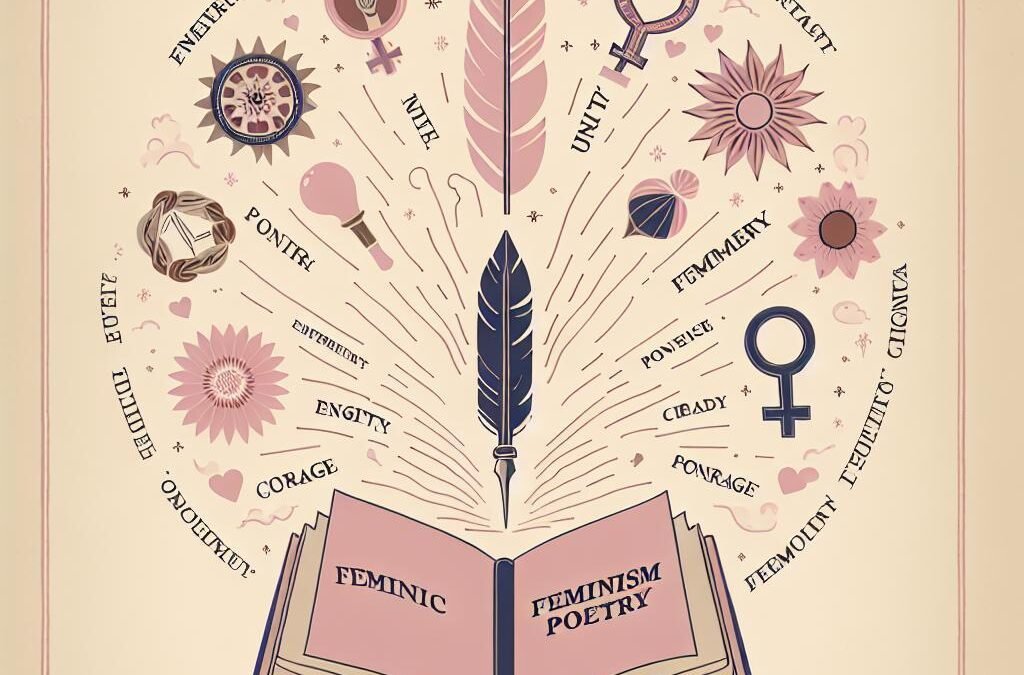Rooted in centuries of negotiation between public silence and creative defiance, feminist poetry resists any singular definition, instead mapping shifting boundaries of gender, art, and power. This tradition absorbs contrasting movements and lived experiences, marking a relentless search for expressive agency, equity, and connection between the personal and social. Within its evolving corpus, feminist poetry interrogates inherited forms and constructs, asserting itself as a vital mode for exploring and reshaping identity, justice, and human possibility.
Historical Development and Significance of Feminism Poetry
Early pathways of feminism poetry run through the eighteenth and nineteenth centuries, when women poets worked within private circles or published anonymously to circumvent restrictive norms. Their writing encoded layered resistance, exploiting metaphor and symbolism in order to challenge exclusion from public letters and civic discourse. Mary Wollstonecraft and Anna Laetitia Barbauld are credited with infusing poetry with philosophical inquiry and political urgency, while Charlotte Smith, Felicia Hemans, and Christina Rossetti foregrounded emotion, intellect, and maternal subjectivity. Many Victorian poets intertwined verse with social activism, making poetry a sanctuary for female thought and ambition.
Foundations and Key Figures
Poetic innovation flourished across the nineteenth and early twentieth centuries, with Elizabeth Barrett Browning’s “Aurora Leigh” and Emily Dickinson’s unorthodox lyricism each modeling new ways to articulate feminine experience. Frances E.W. Harper, through works like “Bury Me in a Free Land,” confronted intersecting oppressions of race, gender, and class. Later, the Harlem Renaissance, embodied by writers including Gwendolyn Brooks and Georgia Douglas Johnson, accelerated both aesthetic transformation and social critique. Across continents, feminists redefined the stakes and possibilities of poetic expression, shaping it into an active instrument for collective imagining.
Modernism, Second Wave, and Expanding Horizons
The crises and upheavals of the twentieth century (allied with suffrage movements, world wars, and civil rights struggles) generated seismic changes in feminism poetry. Modernists harnessed fragmented structure to mirror destabilized gender hierarchies, while Mina Loy and Edna St. Vincent Millay dismantled conventions of form and voice. By the 1960s and 1970s, poets entwined personal revelation with political critique: Adrienne Rich’s calculated formalism excavated hidden histories, Anne Sexton confronted taboo subjects, and Audre Lorde radicalized lyric through intersectional insight. Literary collectives, from the Black Arts Movement to Chicana and Asian American feminist circles, broadened thematic and linguistic frontiers, embedding poetry within intersecting justice movements.
Core Themes and Strategies
Feminism poetry carves its identity through recurring confrontations with power, marginalization, and the reimagining of self. These poems wield irony, narrative reclamation, and formal play to confront the realities of gender, sexuality, and embodiment. They channel private struggle toward collective reckoning, amplifying silenced or overlooked lives through literary experiment.
Social Justice, Identity, and Equality
Many feminist poets view language as a tool to dissect and upend entrenched bias. Lucille Clifton’s minimalist poems assert dignity against racism and misogyny, while Marge Piercy’s “To Be of Use” centers on labor and class solidarity. Eavan Boland gives voice to erased Irish women, rewriting the cultural record from the margins inward. Claudia Rankine, in “Citizen,” scrutinizes microaggression and racialized identity within contemporary landscape, connecting personal encounter to systemic injustice. These strategies transform the poem from private artifact to public intervention.
Body, Autonomy, and Transgression
Exploration of embodiment (menstruation, maternity, abortion, disability, and sexual inequality) beyond classic romantic love infuses feminist poetry with urgency and variety. Sharon Olds chronicles familial and erotic experience with granular honesty, while Rita Dove frames memory and desire through the lens of the body’s archive. Jillian Weise foregrounds disability and queerness, distilling autonomy and resistance through lived encounter. They present the body as both vulnerable and ungoverned territory, transcending cultural scripts through candor and defiant vision.
Hybrid Identities and Intersectionality
Intersectional feminism poetry resists single-axis narratives and instead privileges multifaceted selves. Audre Lorde fuses Blackness, lesbianism, and motherhood into experimental mythmaking; Gloria Anzaldúa interlaces Spanish and English to manifest border identities and immigrant realities. Ocean Vuong, Fatimah Asghar, and Natalie Diaz each write familial, multilingual, and diasporic stories into the lyric fabric, bridging cultural rupture with hybrid imagination. These poems are acts of reclamation and adaptation, structuring solidarity through difference.
Form, Innovation, and Literary Voice
Feminist poetry distinguishes itself through restless experimentation, reworking both the materials and boundaries of verse. Formal subversion serves as a conceptual strategy, enabling poets to inhabit, adapt, or discard received structures in pursuit of authenticity and transformation.
Expanding and Remixing Tradition
Poets in this tradition regularly fracture or reimagine classic forms: from sonnets stripped of closure, to collage, typographical play, or hybrid projects uniting text with performance. Muriel Rukeyser’s documentary poetics intertwines testimony, history, and lyric voice. The rise of performance and spoken word, expressed through the work of Patricia Smith and Dominique Christina, reinforces poetry’s communal function, resisting boundaries between audience and writer. Feminist poets privilege flexibility and inventiveness, repurposing inherited forms for subversive ends.
Personal, Collective, and Polyphonic Narratives
Autobiography in feminism poetry serves as both confession and declaration. Poems intertwine testimony with critique, creating texts that resonate on multiple levels. Adrienne Rich’s “Diving into the Wreck” recasts self-examination as archeological labor, unearthing suppressed histories and communal wounds. June Jordan orchestrates solidarity through poems that mourn, celebrate, and invigorate readers simultaneously. These polyvocal works refuse fixed distinctions between personal truth and public struggle, instead mapping the full spectrum of experience.
Readers interested in exploring new formal and thematic directions may browse the evolving digital archive of The Poetry Project.
Key Works and Contemporary Impact
Landmark contributions in feminism poetry continue to reverberate across cultures and generations. The publication of Sylvia Plath’s “Ariel” initiated a seismic reimagining of gendered lyric, combining myth, narrative, and psychological intensity to dramatize radical agency and transformation. Plath’s poems, including “Lady Lazarus,” encode pain, resistance, and resurgence within compressed lines and multilayered metaphor. Plath shaped a lineage followed by Adrienne Rich, whose “Twenty-One Love Poems” and “The Dream of a Common Language” manifest aspirations for justice and communal belonging. Audre Lorde’s collected works catalyze intersectional and antiracist movements, bridging poetry with activism.
New Generations and Global Voices
Recent decades have witnessed an expansive proliferation of feminist poetics on a global scale. Claudia Rankine, Natalie Diaz, Warsan Shire, and Sandeep Parmar contribute diverse approaches, reflecting on violence, migration, language, and faith, from lived and collective perspectives. Poems anthologized in volumes including Women Empowerment Poems and Famous Female Poets illuminate the vast impact and generative energy of the tradition. These poets rework boundaries, respond to shifting sociopolitical climates, and transmit new forms of solidarity and critique.

